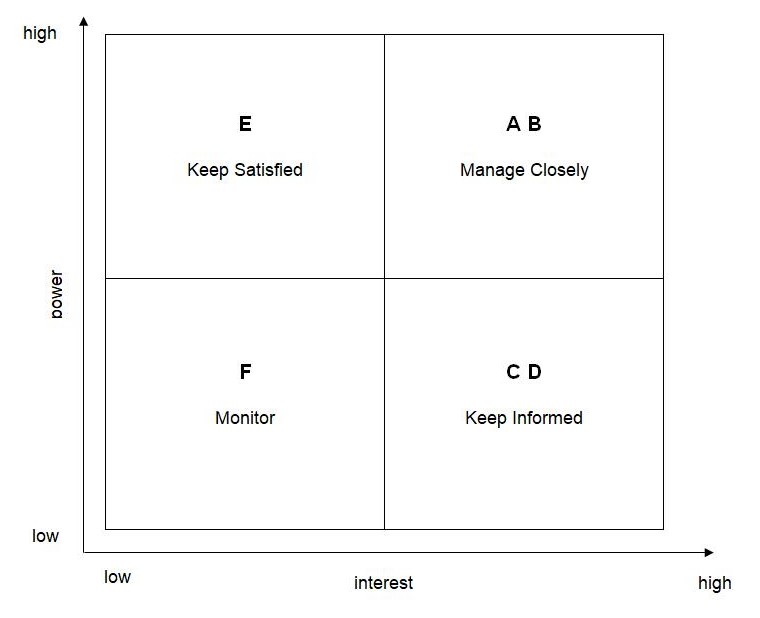The project I have worked on is the development of an analytic tool for customer service at Vivid Seats. The implementation of the project was essential in terms of the improvement of customer care by collecting and analyzing customers’ feedback. The project included several stakeholders of different interest and influence. While the significant financial decisions were made by the Company Executives, the main interest came from the Customer Care Managers who reported their requirements for the project.
Customer Care Lead Manager (A) was a stakeholder with high interest responsible for setting requirements for the project as the developing product was needed at the Customer Care department. He was an internal user of the product and thus had to be continuously informed. Project manager (B) was also the stakeholder with high interest and high influence, as it was his responsibility to finish the project in due time, within the budget and according to the requirements.
The Development Team (C), as well as the Tester (D), had little influence on decision-making, but high interest in performing the work on the project without complications. This group of stakeholders located in the bottom right quadrant had little or no responsibility for proper decision making, but their duty was to provide the work of high quality to satisfy the stakeholders of high power.
The stakeholders with little interest were Externals Users (F) and Company Executives (E) who were responsible for budgeting. The latter group of stakeholders had an unlimited power on the project and the ability to close it if they were not content with the results or expenses. These stakeholders had to be kept satisfied with minimum informing. Externals Users had to be monitored as neither their influence nor interests were high.
In the given situation, several stakeholders could “migrate” from one quadrant to another. It was not likely that either the interest or power of External Users (F) would increase. However, there was the probability that Company Executives (E) would shift to the top right quadrant showing more interest in the project. In this case, it was also likely that the Customer Care Lead Manager (A), as well as the PM (B), would lose their influence and move to the bottom right quadrant.
